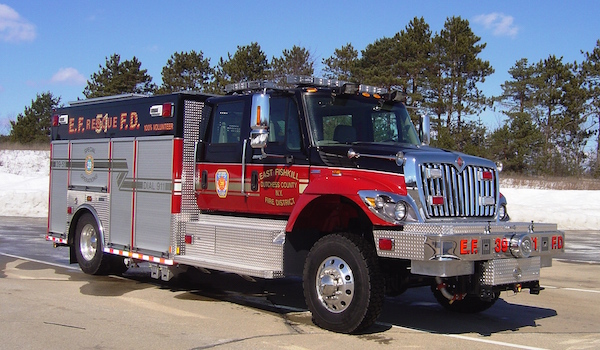As more and more departments start to downsize their fleet in favor of multipurpose apparatus, like our RPM, many are contemplating purchasing an initial attack vehicle. Initial attack fire apparatus come in a variety of different designs, and vary from department to department based on their intended use. While some departments use them to initiate fire suppression attacks and provide support while waiting for larger pumpers to arrive on the scene, other departments have used them to respond to smaller fires that require fewer personnel.
Because they come in so many different designs with so many different uses, it’s easy for apparatus purchasing committees (APCs) to get confused when trying to figure out whether or not an initial attack apparatus would be useful in their own fleet. To help make that decision a little more clear, here’s how you can determine if your department needs an initial attack fire apparatus:
What Defines an Initial Attack Apparatus?
According to the National Fire Protection Association (NFPA) 1901, Standard for Automotive Fire Apparatus, Chapter 6, the basic requirements for an initial attack apparatus include a minimum 250-gpm pump, 200-gallon water tank, 22 cubic feet of compartmentation, and 10 cubic feet of storage space for 2 ½-inch or larger hose – all with a maximum gross vehicle weight rating (GVWR) of less than 20,000 lbs.
In comparison, a Chapter 5 Pumper Fire Apparatus requires a 750-gpm pump, 300-gallon water tank, 2x the compartmentation, and 3x as much space for 2 ½-inch or larger hose.
How Do I Figure Out if My Department Needs One?
In order to determine whether or not your department needs an initial attack apparatus, you’ll have to examine your standard operating procedures (SOPs) and review your department’s needs based on your previous call history. The last thing you want to do is spend money on an apparatus that won’t get used, so you’ll want to gather as much evidence as possible to support your decision. To help guide you through this process, click here to see an example of an initial attack apparatus analysis from the St. Louis Park Fire Department in Minnesota.
Step 1: Determine Your Community’s Fire Risk
Using data from department’s records, go through and evaluate the amount and variety of calls your department has responded to over the past few years. Make note of:
- How many responses were for actual fire incidents
- What type and how many apparatus were used to respond
- How many personnel responded to each incident
Looking at the numbers, you should be able to determine whether or not your community has a high or low fire risk, and see if your current fleet and personnel have been sufficient in handling these incidents.
Step 2: Evaluate Your Current Fleet and SOPs
Now that you have a better idea of the fire risk in your community and the effectiveness of your current approach, make a list of every current vehicle in your fleet and review your SOPs for each. Could you use the help an additional apparatus, or do you simply need to adjust the way you operate? For example, if your data indicate that 95% of all responses were adequately handled with one attack apparatus and fewer than 5 personnel, a smaller initial attack vehicle might be the perfect substitute for your full-size pumper.
Step 3: Imagine New SOPs with an Initial Attack Apparatus
After evaluating your current SOPs, try to imagine what your new SOPs would be like if your department had an initial attack apparatus. Keep in mind that most initial attack apparatus only have a staffing level of 2-3 personnel, so your tactics will likely need an adjustment. Weigh the pros and cons of purchasing a new initial attack apparatus, and reflect on previous incidents where an initial attack vehicle would have been useful. How would you have done things then? How would you use one now? Could it complement another apparatus? If you’re thinking of replacing another apparatus, imagine a prior incident where you had an initial attack vehicle instead of your typical apparatus. These are just a few examples of the scenarios you’ll want to be thinking about before you make your decision.
Step 4: Contact the Nearest Marion Dealer
If you made it through Step 3 and all signs point towards a new initial attack vehicle, use our online dealer map to contact the closest Marion dealer and let us help you design the perfect apparatus for your department. As I’m sure you know, there are hundreds of different styles and designs for initial attack vehicles, and our experienced engineers know exactly how to build a rig that fits your needs.
For more information about our Initial Attack Apparatus options, please talk to your nearest Marion dealer, or contact us personally at (715) 754-5261
